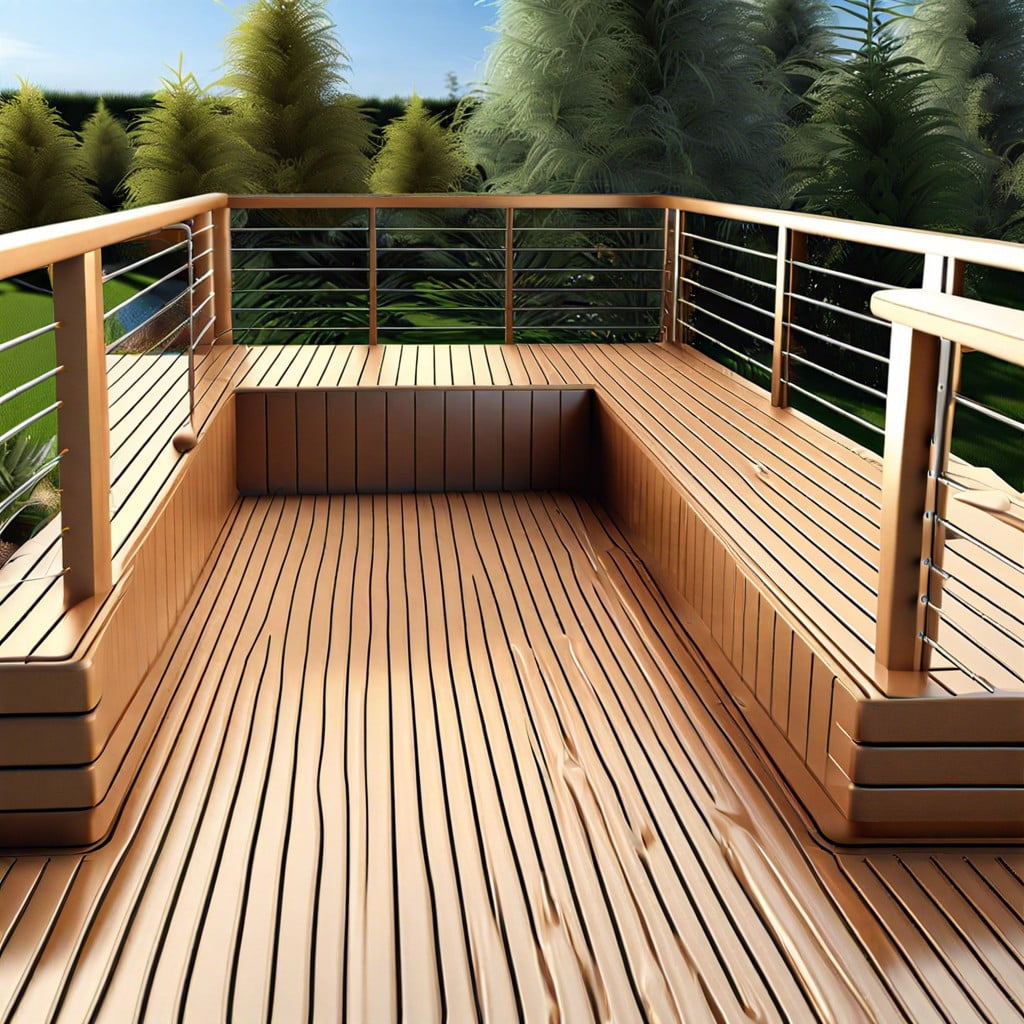Discover the key considerations for choosing the perfect polymer deck for your outdoor space in this handy buying guide.
Key takeaways:
- Polymer decks are durable and low maintenance.
- They resist fading, scratching, and staining.
- Installation process is similar to traditional wood decks.
- Polymer decks may be more expensive upfront, but offer long-term cost savings.
- Polymer decks are environmentally friendly, made from recycled materials.
Overview of Polymer Decks

Polymer decks, made from synthetic materials like PVC or composite wood, have revolutionized outdoor living spaces. They stand out for their durability and minimal maintenance needs. Thanks to modern technology, these decks mimic the aesthetics of natural wood without the fuss of frequent repairs or treatments. Polymer materials are immune to the typical nuisances of decay, mold, and insects that often plague traditional wood decks. This makes them a practical yet stylish choice for homeowners looking to enhance their outdoor areas. Plus, the variety of colors and finishes available ensures that there’s something to suit every taste and home design.
Benefits of Polymer Decks
Polymer decks are the superheroes of the backyard! They resist fading, scratching, and staining, which makes them perfect for families who actually use their backyards and not just for showing off to neighbors. You won’t have to repaint or reseal these decks every few years, saving you time and money. Additionally, they are slip-resistant which is great for areas near pools or in rainy climates—no more impromptu slip and slide accidents!
They’re also a boon for those who despise pests as they don’t attract termites or carpenter bees. On top of that, these decks handle just about any weather condition like champs, from scorching sun to icy winters. Plus, they come in various colors and styles, offering aesthetic flexibility to match your home’s vibe effortlessly. And let’s not forget, cleaning is a breeze—just some soap and water, and you’re good to go! No more intense scrubbing weekends.
Installation Process
Installing a polymer deck is surprisingly similar to building a deck with traditional wood. Here are a few key steps that will help you through the process:
Firstly, prepare your site. Ensure the area is clear, flat, and ready for construction. This means removing any existing structures, debris, or vegetation that could get in the way of your pristine, polymer paradise.
Next up, it’s time to lay the foundation. Install the ledger board and concrete footings to ensure a stable base. Who knew concrete and polymers could be such firm friends? Ensuring your foundation is level will save you from headaches later—no one wants a wonky deck!
Now, bring in the joists and beam frames. These are the backbone of your deck, much like how caffeine is the backbone of most Monday mornings. Secure them precisely; alignment is key unless you’re aiming for a deck that doubles as a funhouse.
Finally, the main event—laying down those polymer deck boards. Start from the edge of the house and work your way out. Attach each board with deck screws or hidden fasteners for a sleek, no-screw-visible finish. It’s like magic, but with tools!
By following these steps, you’ll create a sturdy and stylish space that’s ready for the ultimate backyard barbecue—or a serene solitude retreat, depending on your mood swings!
Cost Analysis
Polymer decks initially might make your wallet wince; they are generally more expensive than their timber counterparts. However, it’s key to look at the long runway of benefits they bring. Think of them as the tortoise in the age-old race against the hare—slow and steady, and cost-effective in the long haul.
They are like that pair of boots you splurge on, knowing they’ll last a decade. With polymer decks, the minimal maintenance costs pile up to significant savings. There’s no need for frequent staining or replacing rotten boards.
Plus, considering many manufacturers offer lengthy warranties, this is almost like having a financial safety net for your outdoor living space. It’s an investment at the start but one that pays itself off with fewer headaches and more barbecues, which, let’s be honest, is always a winning formula!
Environmental Impact
Polymer decks might just be the superhero the planet needs in the decking world! Made primarily from recycled materials, they keep vast amounts of plastic away from landfills. Here’s the eco-friendly scoop:
- Recycled components: Many polymer decks are crafted from recycled plastics and wood fibers. It’s like giving old materials a glamorous second life, not just recycling, but upcycling!
- Durability: Longevity is a big green checkmark. Since they resist decay, mold, and pests, polymer decks don’t need to be replaced as often as wood. Less replacement equals fewer resources used.
- Less maintenance: Forget about toxic stains or sealants. These decks require only soap and water for cleaning, reducing the chemical runoff into our soils and waters!
Ah, nature and your backyard can now breathe a little easier with polymer decking!
Recap




